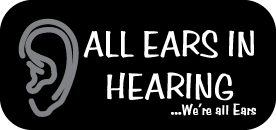Hearing Tests & Hearing Loss

How is hearing tested?
Hearing tests are simple to do and are painless. The aim of the hearing test is to determine the softest sound a person can hear (hearing threshold) over a range of frequencies (pitches). For the most accurate results, testing should be performed in sound proof conditions.
Headphones are placed over the ears and pure tones or beeps are presented at various frequencies and volume levels to ascertain the softest sound you can hear at each frequency. You are required to respond (usually by pressing a button) to each sound that you hear, no matter how soft. As hearing loss can affect ears differently, both ears are tested separately.
The results are plotted on a graph called an Audiogram. The frequency or pitches are measured in Hertz (Hz) and are marked on the horizontal axis. The pitch increases from left to right, with the lower numbers representing lower pitch or bass sounds and the higher numbers representing higher pitch or treble sounds. The loudness of sound is marked on the vertical axis and is measured in decibels (dB). 0dB represents the softest sound heard by a normal healthy ear. 120dB is usually considered to be the loudest sound tolerated by a person.
How well you can hear speech is also tested. To hear speech, you need the ability to detect or hear the sounds of speech and secondly, the ability to understand speech. The audiogram show’s a person’s hearing ability, but it does not indicate how clearly a person can understand speech. For a speech test, words are presented through the headphones at various volume levels and you are required to repeat back what you heard. A person who has difficulty understanding speech even with a lot of volume, may be limited in the benefits that hearing aids can provide.
We also have the equipment to do tests of middle ear function. These tests are helpful in determining the cause of hearing loss by giving us information on how well the eardrum moves with pressure changes and how the ossicular chain (small bones in our middle ear) react to loud sounds.
At All Ears in Hearing, we will discuss the results of the hearing loss assessment with you and send a report to yourself or to your GP if you wish. A Medicare rebate is available for General Practitioner Referrals, Ear Nose and Throat Specialist referral, Neurologist referral or referral through the Chronic Disease Management Program.
At All Ears in Hearing Rochedale South and Springwood, we have the right equipment, so you can actually see inside your own ears!

What is hearing loss?
Hearing threshold is the level of the softest sound a person can hear. Normal hearing is considered to be between 0dB and 20dB. The deviation of the hearing threshold from ‘normal hearing’ is called the hearing loss.
Hearing loss is described in degrees of hearing loss and is classified as either mild (thresholds at 25dB-35dB), moderate (thresholds at 40dB- 65dB), severe (thresholds at 70dB-85dB) or profound (thresholds at 90dB or above). Those with a mild hearing loss may have difficulty only in noisy situations, whilst those with a moderate, severe or profound hearing loss may have difficulty hearing in all situations.
Signs of hearing loss
Hearing loss progresses slowly, so it can sometimes be very difficult to gauge how your own hearing is. As most people adapt to the loss by using compensatory strategies such as lip-reading, it is usually family or friends who comment first.
The common signs of a hearing loss are:
Difficulty understanding conversations especially when there is ‘noise’ present
- Asking people to repeat themselves
- Group conversations are hard to follow
- People seem to mumble.
- The television and radio are at high volume levels
- Can’t hear clearly on the telephone.
- Difficulty telling direction of sound

Why are people mumbling?
Types & causes of hearing loss
Hearing loss can be categorised into 4 types, depending on what part of the auditory system is damaged.
- A sensorineural hearing loss refers to a problem in the inner ear, either in the hair cells of the cochlea or the hearing nerve or both. The more common causes of a sensorineural hearing loss are due to the ageing process and damage to the hair cells by exposure to loud noise. Other causes may be genetic, certain medications and diseases such as rubella. The majority of all sensorineural hearing losses are a permanent loss, so medical intervention such as surgery or medication rarely improve the hearing loss. Hearing devices are the best option to enhance hearing and communication.
- A conductive hearing loss refers to a problem in the outer or middle ear that prevents sound from reaching the inner ear normally. This hearing loss is common in children due to middle ear infections and/or fluid behind the ear drum. Other causes may be genetic (otosclerosis), perforation of the eardrum, damaged ossicles or a build up of wax. In the majority of these cases, the hearing loss can be reversed with medical intervention. If not, hearing devices may be of benefit.
- A mixed hearing loss is a combination of both a sensorineural and conductive loss.
- A central hearing loss results from damage or impairment to the nerves of the central nervous system, either in the pathways to the brain or in the brain itself.
How hearing loss can affect an individual
- Drop in self esteem and confidence levels
- Stress and irritability due to frustration in communicating
- Fatigue – many people may report feeling tired at the end of the day as a lot of effort has gone into listening
- Embarrassment
- Withdrawn / Antisocial behaviour due to the difficulty of not being able to follow conversation
- Lack of concentration in conversation

How hearing loss can affect family and friends
- May find themselves talking for the other person
- Sacrificing some social activities
- Frustrated and tired due to difficulty in communicating
- Embarrassed in company
Hearing Instruments can help ease the frustration, embarrassment and fatigue associated with hearing loss. Many studies have shown the benefits of hearing instruments and the difference they can make. Many people who wear hearing aids and also their families, report improved relationships, more social activity, reduction in stress, anger and frustration and an overall improvement in quality of life.

